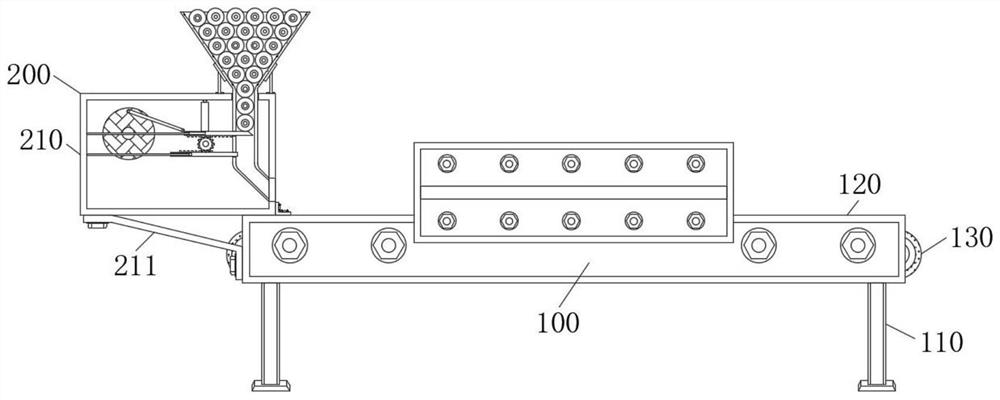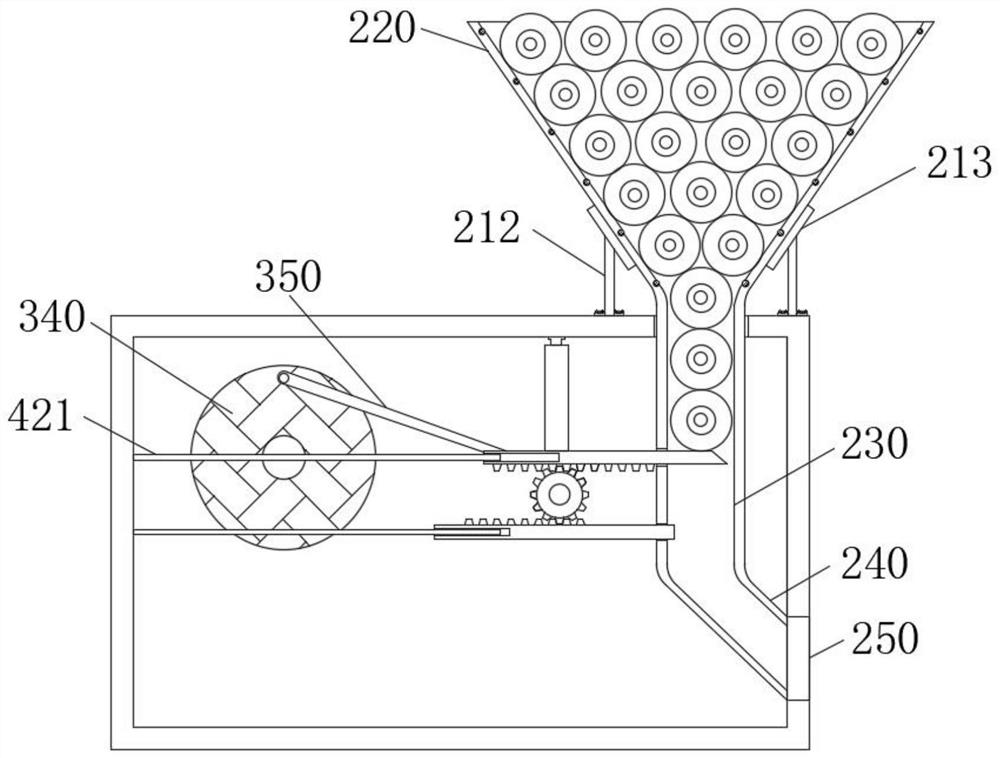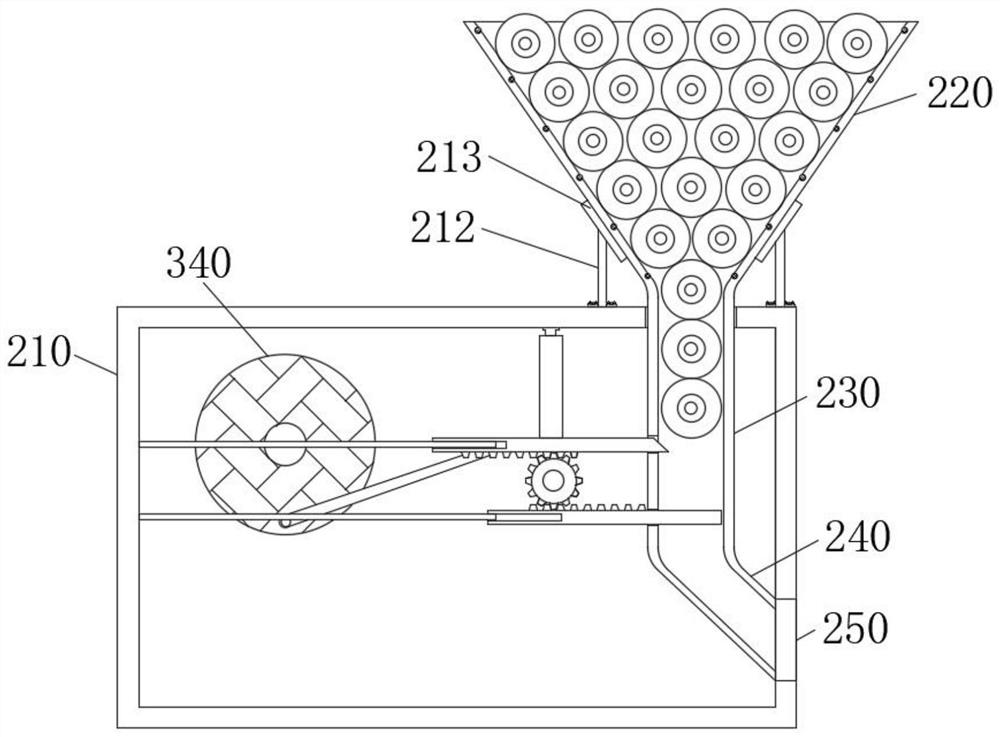Transportation device for lithium ion storage battery production
A technology of transportation device and storage battery, which is applied in the direction of transportation and packaging, conveyor objects, loading/unloading, etc., which can solve the problems of increasing manpower consumption and achieve the effect of ensuring work efficiency
- Summary
- Abstract
- Description
- Claims
- Application Information
AI Technical Summary
Problems solved by technology
Method used
Image
Examples
Embodiment Construction
[0029] The following will clearly and completely describe the technical solutions in the embodiments of the present invention with reference to the accompanying drawings in the embodiments of the present invention. Obviously, the described embodiments are only some, not all, embodiments of the present invention. Based on the embodiments of the present invention, all other embodiments obtained by persons of ordinary skill in the art without making creative efforts belong to the protection scope of the present invention.
[0030] like Figure 1-10As shown, the embodiment provided by the present invention: a transportation device for lithium-ion storage battery production, including a device main body 100, the device main body 100 includes a support column main body 110, and the tops of two sets of support column main bodies 110 are fixedly connected with guardrails 120. The conveyor belt main body 130 is fixedly connected between the guardrails 120 of the group, and the top of t...
PUM
 Login to View More
Login to View More Abstract
Description
Claims
Application Information
 Login to View More
Login to View More - R&D
- Intellectual Property
- Life Sciences
- Materials
- Tech Scout
- Unparalleled Data Quality
- Higher Quality Content
- 60% Fewer Hallucinations
Browse by: Latest US Patents, China's latest patents, Technical Efficacy Thesaurus, Application Domain, Technology Topic, Popular Technical Reports.
© 2025 PatSnap. All rights reserved.Legal|Privacy policy|Modern Slavery Act Transparency Statement|Sitemap|About US| Contact US: help@patsnap.com



